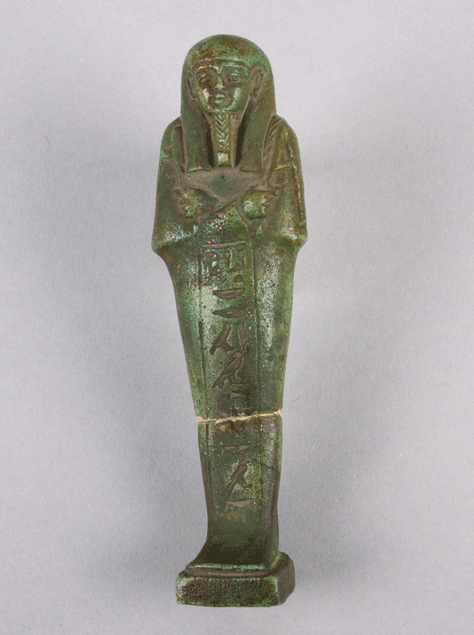
66.35.1, ushabti funerary figurine, 13 ½ centimeters (5 ¼ inches) tall
Faience
Egypt
Donated by Betty Shaffer
Photograph by B. Bernard

66.35.1, ushabti funerary figurine, 13 ½ centimeters (5 ¼ inches) tall
Faience
Egypt
Donated by Betty Shaffer
Photograph by B. Bernard
Unlike most other types of ceramic from around the world, faience does not start with natural clay. Instead, it requires the labor-intensive process of crushing rocks of a certain mineral composition to a fine powder, then mixing in water to make a paste that can be modeled like clay. Copper compounds in the paste react with oxygen during firing and minerals melt and flow to the figurine's surface, forming a glassy coating that is rock hard after it cools.
Since Betty Shaffer donated this example, collected by her grandfather in Egypt in the early 1800s, to the Maxwell museum in 1966, curators have consulted with experts around the country about its origin. Some concluded that it was placed in an ancient tomb to do the bidding of the god Osiris. Other suspected that it was a reproduction produced in the 1800s, for sale to tourists visting Egypt. Whether it is 200 or 3000 years old, it required skill and hard work to produce. The faience technique is still used today in parts of the Eastern Mediterranean region to make beautiful blue-green objects.
To return to the Ceramics page, click here.
All content copyright © Maxwell Museum of Anthropology, University of New Mexico. A high-resolution verson of the sandal photographs may be ordered from the Maxwell Museum's photo archives. Please make note of the catalogue number. For more information please visit the photo archives web page
Page last revised on December 21, 2010. Please report problems to toh@unm.edu